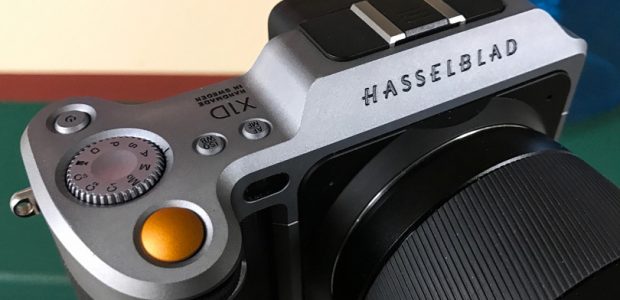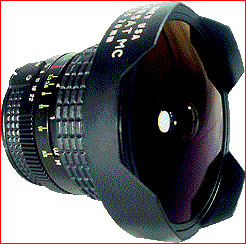
Ideal for Reduced Frame Digital
and it’s Cheap Like Borscht
How about a medium format rectangular fish-eye lens that will cover 645 medium format and that sells for under $250? Can’t be very good, right?Wrong.
Like the lens in my recent review of theHartblei 45mm f/3.5 Super-Rotator, this is a Ukrainian made lens, byArsenal. And, like the Hartblei its build and image quality are far beyond what one would expect for the price.
It is distributed in the U.S. byKiev Cameraand is frequently discounted by them viaebayauctions. There is a dedicated (auto-aperture) version for theMamiya 645at $499, and versions with no aperture coupling with the use of lens mount adaptors for theMamiya 645,Contax 645andPentax 645cameras, at a list price of $269. I bought mine new fromKiev Camerain a version for theContax 645for $150 on anebayauction.
_____________________________________________________________
What’s The Point?
There was a time (the 1960’s) when fish-eye lenses, whether circular or rectangular, were in vogue. Today they are rarely seen, and their use has become something of a visual cliché. But, with the advent of computer image processing this has changed, though few photographers are aware of how and why.
Circular fish-eye lenses don’t count in this discussion. They really aren’t even seen very much any more. But ultra-wide lenses that produce rectangular (though barrel distorted) images are still around, and many camera makers, such as Canon and Nikon, still feature them in their lineups.
Optically correcting an ultra-wide lens for barrel distortion is tough. Making a lens with a 180 degree diagonal angle of view that does not have significant barrel distortion is even tougher. Ignore the distortion and the job is much easier, and the lens is therefore significantly less expensive to make. But the images produced can not reproduce horizontal lines without bowing them severely.
This is where computers come in. Take the barrel distorted image and load it into a specialty program that knows how to straighten it out, and viola! Distortion is removed with a single mouse click.
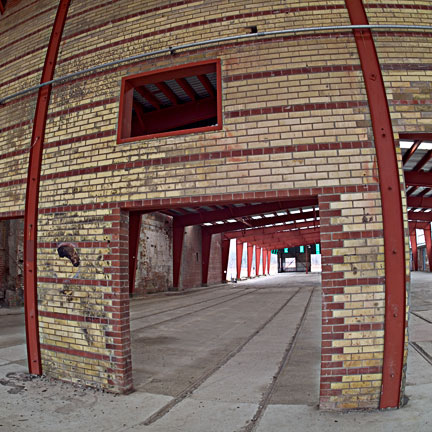
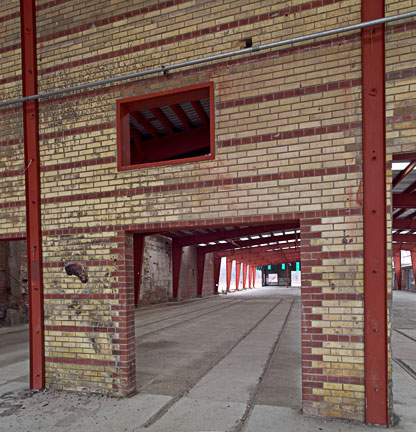
Fig. 1
In this example I have both removed the barrel distortion inherent in the lens’ design and also
much of the keystoning distortion caused by tilting the camera upwards — all with a single step.
Here’s the point though. Reduced frame digital cameras, like the mainstream 6 Megapixel DSLRs that we now have (early 2004), are unable to use very wide angle lenses because of the 1.5X or 1.6X cropping factor of their smaller-than-full-frame coverage. But, put on a rectangular fish-eye lens and correct the barrel distortion with software, and you have a reasonably priced ultra-wide angle solution.
I wrote about this at some length in the Fall of 2002 in my review ofImagealign and the Canon 15mm lens, and so I won’t repeat any more about the general subject. Everything that I wrote about using software to correct 35mm rectangular fisheye lenses applies to medium format and theArsat 30mmas well.
With my move to medium format digital in mid-2003, using theKodak DCS Pro Backon myContax 645, I’m back to the same requirement as I had when using a reduced frame 35mm DSLR. I sometimes need a wider angle lens than those available, because theKodakback does not cover the full 645 format. This is where theArsat 30mmrectangular fish-eye enters the picture.
_____________________________________________________________
Build Quality
The Arsat 30mm lens is multicoated, features a built-in petal style lens shade that is part of the lens’ body, and has a ribbed textured focusing ring. F stops range from f/3.5 down to f/32 in half stops, and the body is of all metal construction. My only design and construction criticism is that the aperture blades are not blackened, and this may cause some internal flare problems, though testing has not shown this to be a real-world issue.
All scales and indexes are engraved rather than just painted on. Even the camera’s unique serial number is engraved into the lens barrel. Remarkable.
The version I ordered was for the Contax 645, and it came with a separate adaptor for this lens mount. Once attached it is secure and feels like part of the lens.
This is a manual focus, manual aperture lens. Meaning — even though your camera may feature autofocus you still need to do so manually (though focus-assist works), and you also need to meter and shoot in manual mode with the lens stopped down to shooting aperture.
The lens comes with front and rear caps and a padded vinyl carrying case. The rear cap though is for the lens’ proprietary mount, and so I had to order a Contax rear lens cap separately from another dealer. Also, the lens ships with three rear-mount filters for B&W shooting, found inside the lens case’s lid. How quaint. I don’t know how many people will find them of use — obviously those still shooting B&W film — and so though redundant for many users, it shows attention to detail.
_____________________________________________________________
How Wide Is It?
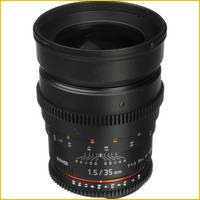
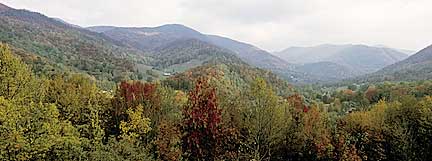
Fig. 2
I haven’t measured the actual angular coverage, but as can be seen from the above comparison the increase is considerably more than the 5mm focal length difference would lead you to believe. This is of course because theArsatisn’t designed with the usual linearity constraints of a typical lens.
The comparison seen in Fig. 2 above was shot with theKodak DCS Pro Back, which has about a 1.5X cropping factor over full-frame 645 film.
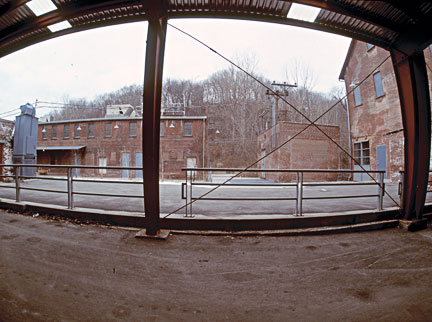

film scan
film scan
Fig. 3
The examples seen above in Fig. 3 are scans from 645 film. They show the uncorrected 30mmArsatframe and the same exposure taken with the widestContax Zeisslens, the 35mm Distagon. (No effort has been made to colour correct between the digital and film frames).
_____________________________________________________________
Resolution
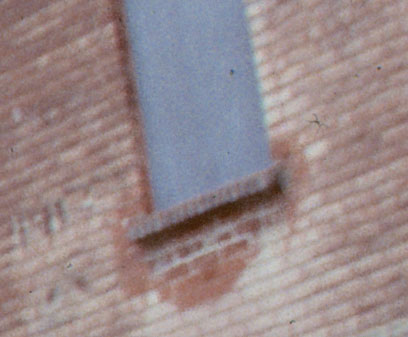
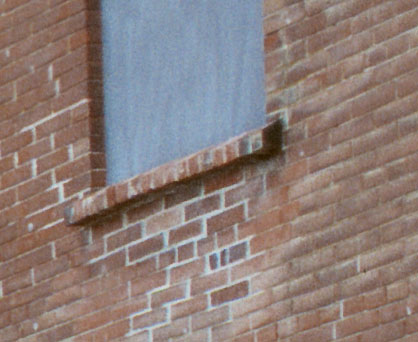
film scan — 100% crop
film scan — 100% crop
Fig. 4
Fig. 4 above shows crops from the extreme edges of both lenses. Both shots were taken at f/8. Now we see why theZeisslens sells for $2,400 and theArsatfor some $250, or less.
But, on the other hand resolution at the center is closer (though the Zeiss lens is still superior), as seen below in Fig. 5. And if you’re shooting reduced frame digital, the way I do, the resolution differences at the corners are narrowed because the edges of the frame are not used.
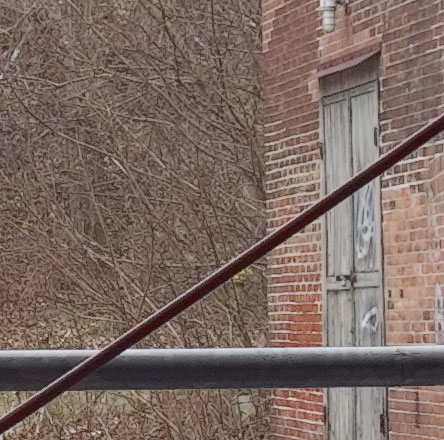
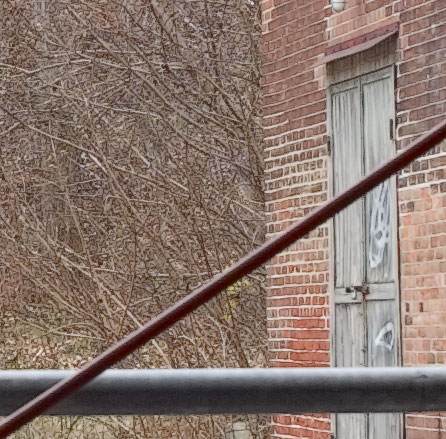
Fig. 5
_____________________________________________________________
Recommendation
TheMC Arsat 30mm f/3.5for 645 medium format cameras is a fun lens. It’s not great, but it sure offers considerable value for the money, I can’t see how one can go wrong. As I wrote in this article’s subtitle —it’s cheap like borscht.
If you shoot film you may find the edges to be soft. But itcancreate some remarkable super-wide images. And if you shoot reduced frame medium format digital it can provide an inexpensive way to achieve the greatest wide angle coverage — allowing of course for the fact that you have to apply digital compensation to get "normal" looking images.
You May Also Enjoy...
Tear Drop Iceberg View
Please use your browser'sBACKbutton to return to the page that brought you here.
Hasselblad X1D – Where Is It?
Shipping Today See also the now-published Hands On Review (Jan 16, 2017) I was fortunate enough to be loaned a Hasselblad X1D before my Luminous-Landscape S.
